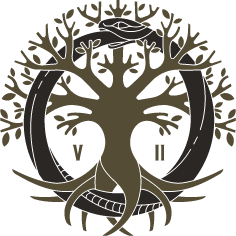St Teresa of Avila, mystic, doctor of the church, and a sister of the Carmelites, her many writings and experiences led to a reform in her convent and provided a spiritual roadmap in her book, The Interior Castle. To give a brief overview, St Teresa had visions from God about the soul of human beings. Within each of us there is a castle made from crystal with 7 mansions. As you journey to the innermost mansion, you achieve theosis.
The seven mansions of the crystal castle are the seven days we will need to go through to be created and fulfill our most essential cosmic duty. St Teresa’s instruction in ascending through the seven mansion runs parallel to God’s method of creating the anatomy of human consciousness in Genesis. First St Teresa states that before you enter the castle you need to pray, to breathe, like God breathed life into man for him to move. So let us go to the very beginning:
“In the beginning God created heaven and earth”
For such a short sentence there is a lot going on here; it holds the meaning of what it means to be human. Heaven is meaning, something which is invisible, like spirit, wind, and breath. Earth is potentiality, like water and silence.
“And the Lord God formed man of the slime of the earth and breathed into his face the breath of life, and man became a living soul.”
Let us connect the two passages: here we see God takes earth and breathes into it, making man. He takes potentiality and puts heaven (meaning) into it to bring life into man. It is revealed to us the man is the mediator of heaven and earth, meaning and potential. This cosmic pattern can help us understand prayer and how it lets us participate in the world, by always aiming for what is above: climbing the corporate ladder, lifting our hands up in celebration, etc. Breath is also associated with the intellect (once again think of breath as meaning) because if you hold your breath for too long you will lose consciousness. Another way to think about it is when you teach (speaking/breathing) you give new information to your students.
One more caveat I would like to make here is the difference of breath by our relationship with God. When meaning comes down from heaven to earth we breathe in (inhale) and when we reach out to heaven (exhale), being joined by heaven and earth; full participation is required in order for us to fully engage with life. Another way to think about this is through the relationship of questions and answers. Without the potential of an answer there is no question and with no search for meaning there is no purpose for an answer.
“God created the human in his image; in the image of God, he created him.
To explain the above I am going to take out an excerpt from The Language of Creation by Mattieu Pageau :
“The notion that Adam is “in the image of God” means humanity is a symbol of the Creator within creation. Thus, Adam is an embodiment of divine knowledge in the world.”
This essentially describes a cosmological pattern of the human experience in the world. We participate in the world by taking invisible principles and giving it being while also taking being and giving it meaning through the invisible principles.
Let us go back to St Teresa's Interior Castle and see why we need to pray before starting the journey through the castle. In order to journey anywhere you need a destination or a goal to move towards. This is the inhale breath, the breath that takes a potential of yourself and gives it a purpose, a meaning that you incorporate into your own identity. Scripture also notes that we are to make thankful offerings or sacrifices to God, this is the exhale. In the exhale we raise up that purpose we have obtained as gratitude, for giving us meaning and life. But an interesting fact about the Logos is that, in the exhale, He takes some of your burden as His own. Not to get too deep into another topic, but this is evident in the pattern of oxygen and carbon dioxide between animal and plant organisms. In the same manner there is an exchange between humankind and the Logos.
The pattern of breathing is a necessity to ascend many aspects of our lives. From the most basic pattern of breathing for survival, to finding a role in society to participate with our communities, to the way we worship the highest Good. Earlier I mentioned this being evident in the relationship between plants and animals, but we can also see this pattern in the Catholic Mass. Our offerings are represented in the smoke from incense ascending to the top of the church towards heaven, and in turn we receive the Eucharist. Obviously, the Mass/Divine Liturgy is the highest level of that participation but the pattern lives in different levels of reality’s hierarchy.
In short, prayer is a pattern where we find meaning in potential and want to give it body, but the only way to do that is to ask for it, to speak to truth, to declare our intention. In order to participate with ourselves in the world we need consciousness and to keep our consciousness we need to breathe; without it we cannot exist. St Teresa is saying in order to strive for higher meaning, in the center of the castle, we must first be conscious, and with it declare our participation with meaning itself in order to move closer to the Creator. This is the very basic experience of being human. But we have a calling not to pray just for survival, but to ascend and become one with God Himself.

